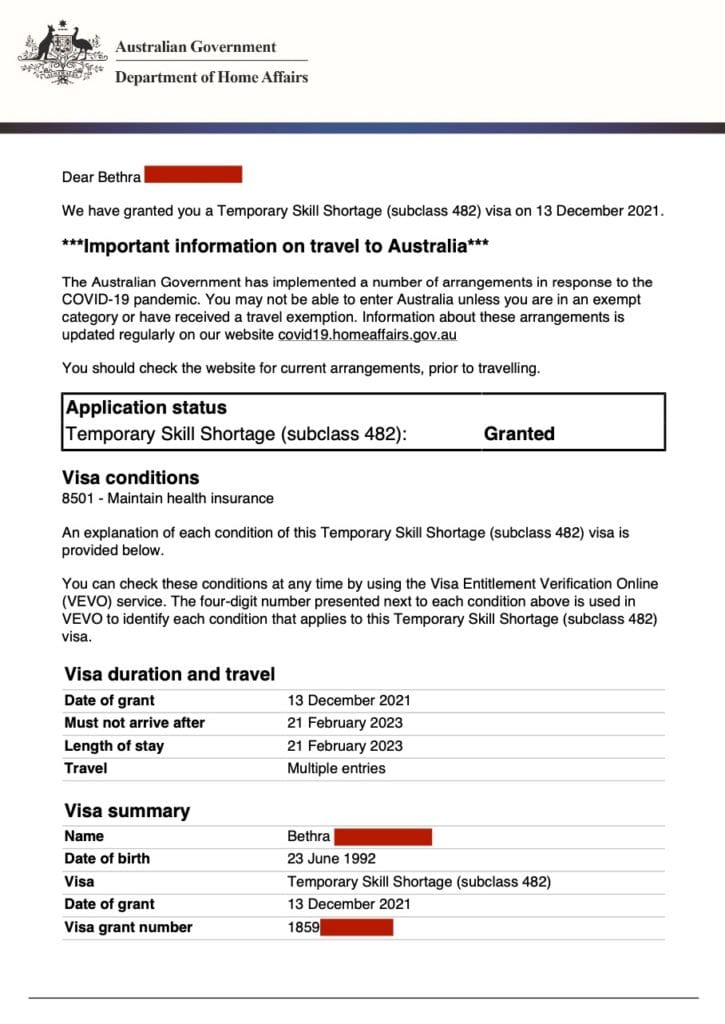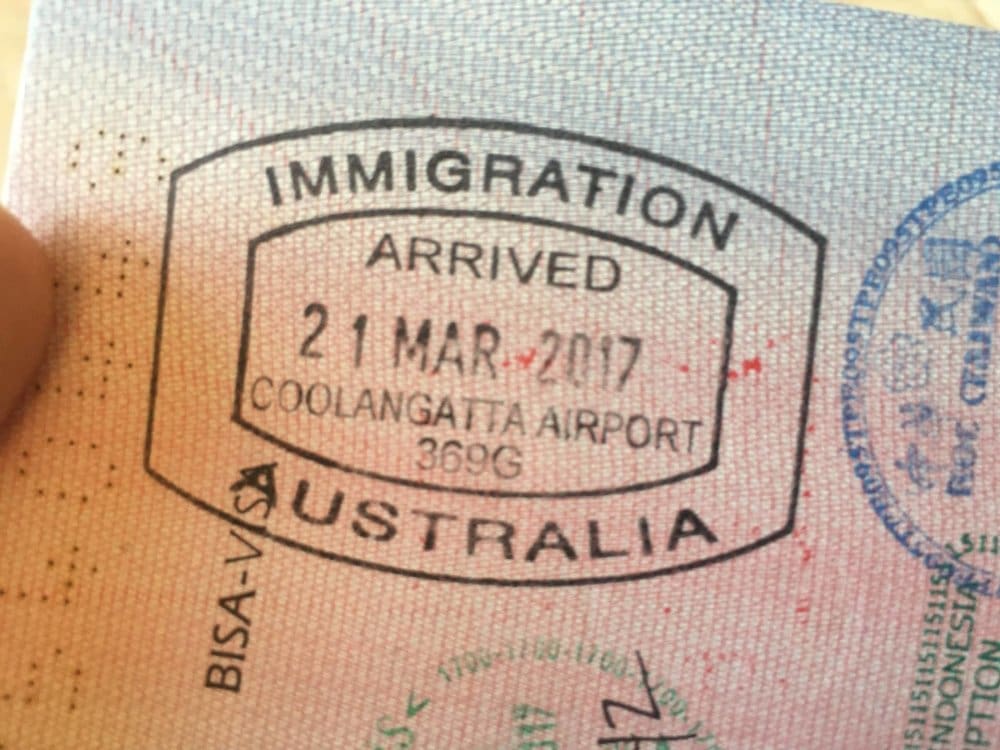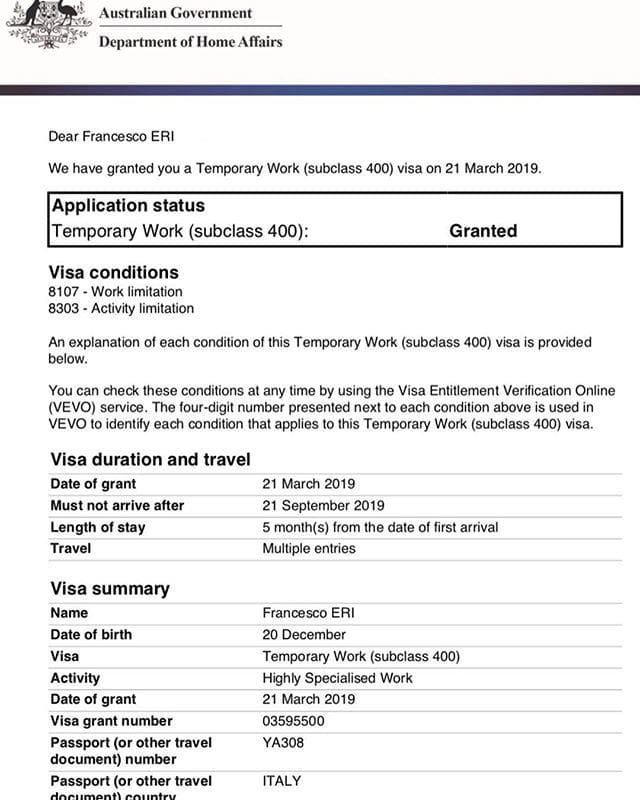Australian visas? Here’s a rundown of some of the significant immigration policies that have been proposed as Australia aims to increase migration as part of its economic recovery from the COVID-19 pandemic.
Due to broad travel prohibitions and border closures, migration to Australia has plummeted since the start of the COVID-19 pandemic, but it is predicted to rebound in 2022.
That’s according to the Treasury’s mid-year economic statement, which reveals that while net overseas migration is predicted to be around minus 41,000 people in 2021-22, it’s expected to rise to 180,000 people in 2022-23. (almost double the previous estimate).
The migration program in Australia is set every year and runs from July 1 to June 30. The population prediction for 2024-25 stays at 235,000 people.
Which visas are now valid for entry into Australia?
On December 15, 2021, Australia’s borders reopened to qualifying international students and some skilled visa holders, nearly six months sooner than the federal budget predicted.
Immediate family members of Australian citizens or permanent residents can also qualify for entry exemption.
More opportunities for those with temporary Australian visas
While many temporary visa holders fled Australia during the epidemic thanks to a lack of work and welfare support, Ben Watt, a migration lawyer with Visa Envoy, believes the focus will now be on granting permanent residency pathways to those who stayed, with several of these pathways being announced.
The planned level for 2021-22 was kept at 160,000 places, with the composition remaining unchanged from the previous year, resulting in 79,600 spots for Skill stream, 77,300 for Families, 100 for Special Qualification, and 3,000 for kids.
“[The Department of Home Affairs] appears to want to replace that 160,000 with a large number of people who are here on temporary Australian visas, in my opinion. They’re attempting to recruit fixed migrants from the Australian population “he claimed.
“That’s the key difference; they’re easing up and allowing a variety of options and extensions for those who are already here to realize their migrating dreams.”
“Throughout the epidemic, the government has implemented a number of visa modifications and will continue to examine visa policies to support Australia’s economic recovery,” a Department of Home Affairs spokeswoman said.
Permanent residency for health and hospitality workers
As part of its economic recovery, the government proposed significant visa modifications in November to keep highly skilled foreigners in crucial sectors. Certain migrants who choose to settle permanently in Australia throughout the pandemic will be eligible to obtain residency under the new rules.
Existing Temporary Skill Shortage (subclass 482) visa holders in the short-term stream, who were previously limited to a two-year stay without such a pathway, may benefit from the revisions. Those who no longer meet the age criteria for the now-discontinued Temporary Work Skilled (subclass 457) visa may also benefit.
“This is a special exemption honoring highly qualified migrant workers who opted to remain in Australia across the pandemic while also addressing Australia’s critical shortages.” “This permits people to stay in Australia while also providing a road to citizenship,” stated Immigration Minister Alex Hawke at the time.
Mr Hawke estimated that roughly 20,000 visa holders may profit from the reforms, with the largest groups working in the health and hospitality industries.

Mr Watt believes the revisions will benefit persons who have been residing in particular hospitality jobs in major cities and have failed to gain permanent status.
“For as long as I’ve been in the industry, I’ve always had a huge number of cooks and restaurant owners who come in, work for a diner or a business in Sydney, Brisbane, or Melbourne, and can contribute.”
“In this field, finding workers is challenging. So it’s been a difficult pill for these people to take, knowing that they’re critically needed yet have no possibility of obtaining permanent residency.”
“It puts an end to the brutality of the situation while simultaneously encouraging more people to choose that route.”
According to a department official, the modifications announced on November 25, 2021 would be phased in from December 2021 to July 1, 2022.
Regional permanent residency for skilled migrants
Temporary migrants who were delayed overseas due to the pandemic have been badly affected, according to Ruby Fowdar, managing director of the Australian Immigration Agency. In Australia, however, visa holders are in an “excellent situation.”
For persons who have lived, worked, or studied in a specified regional area on a previous qualifying visa, she highlighted the skilled regional category 191.
“You have to be on a 494 visa for three years before applying for the 191,” she explained.
According to the department, the visa will not begin until November 16, 2022.
Hong Kong natives are granted permanent residency
Some Hong Kong nationals living in Australia will have access to new specialized pathways to permanent residency beginning in March 2022.
The creation of two new visa streams – subclass 189 (Hong Kong Skilled Independent Stream) and subclass 191 (Hong Kong Regional Stream) – was announced by the government in November as part of Australia’s commitment to developing connections with Hong Kong.
“These unique Australian visas will provide a pathway for temporary school leavers and temporary skilled employees from Hong Kong who are currently in Australia on extended visas,” Mr Hawke said.
Around 8,800 current temporary skilled, graduate, and student visa holders are expected to be qualified for two new visa streams that will begin on March 5, 2022.

The 189 New Zealand Stream Subclass Visa has been changed
The Australian government also changed the New Zealand pathway in 2021 to make it easier for qualifying temporary visa holders who are New Zealand nationals to gain permanent resident status in Australia.
“If you’re a New Zealander living in Australia and earning a particular amount, you can obtain an 189 place,” Mr Watt said.
Changes to the New Zealand stream of the Skilled Independent (Subclass 189) visa went into effect on July 1, 2021, reducing the number of years an eligible applicant must satisfy the required income criterion (least four to three of the last five years).
The government has also taken steps to ensure that temporary visa holders who were on their way to permanent residency before COVID-19 can keep their status.
“New Zealand nationals filing for the New Zealand stream of the Skilled Independent (subclass 189) visa will be eligible to claim an exemption from satisfying the income criterion for the 2020-21 income year as of November 13, 2021,” a spokeswoman for the government stated.
“This will help candidates whose income in 2020-21 was negatively impacted by the COVID-19 epidemic. COVID-19 income exemptions can be claimed for either the 2019-20 or 2020-21 tax years, but not both.”
For skilled migration Australian visas, the ‘Section 48 bar’ has been lifted
Following a revision to section 48 of the Migration Act, skilled migrants in Australia will be able to apply onsite for three skilled migration visa categories for a limited time.
Applicants who have had a visa denied or revoked since their last arrival into Australia are subject to the Section 48 bar.
Mr Hawke agreed on November 13 to provisionally have the visa subclasses 491, 494, and 190 in the list of excluded Australian visas.
Mr Watt explained, “You have vast fractions of individuals in Australia who are on bridging Australian visas awaiting an migration review, which can span five years.”
“Those individuals are now being urged to apply for permanent residency and provisional Australian visas in Australia, which will allow them to apply for permanent residency later.” It’s a large opening, and it will be filled by a large number of people who were formerly unable to apply.
“That’s in place right now, but it’ll have an impact next year.”
The adjustment, according to a department official, only applies during current COVID-19 crisis.
“Once this term expires, the extra subclasses will be withdrawn from the list of eligible Australian visas,” they warned.

For temporary graduate visa holders, new visa settings have been implemented
Temporary graduate visa holders who are stuck overseas and is unable to travel to Australia owing to the epidemic can apply for a new visa, but there will be a delay.
Existing or previous temporary graduate (subclass 485) visa holders whose Australian visas terminated on or after 1 February 2020 will be eligible to apply for a new visa of the same period from 1 July 2022, according to the government.
The 485 Australian visas are for newly graduated foreign students with abilities in specified occupations that choose to stay in Australia and work.
Other temporary graduate visa parameters will alter, including an increase in the stay length on the 485 Australian visa for Masters by Coursework finishers from two to three years, and the Graduate Work stream from 18 to 24 months.
Mr Watt said the concessions previously offered are complicated but worth pursuing “because they will be justice for these folks.”
“It’s a pretty humanitarian concession, and it means that a lot of the brilliance here has a chance to return.”
“There are numerous adjustments and circumstances, as well as who applies for what and who really is eligible for what. However, if there is another border shutdown, this will almost certainly be the first asset to go.”
These modifications will be applied “gradually” from December 2021 to July 2022, according to the government, with more information expected on the department’s website. From July 1, 2022, applicants can apply for a replacement visa.
Ms Fowdar urged people to seek expert migration assistance, citing the fact that information is continuously changing and that additional changes are expected in the next year.
The Department of Home Affairs has official visa information on their website. For more visa guides

